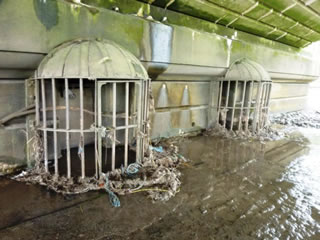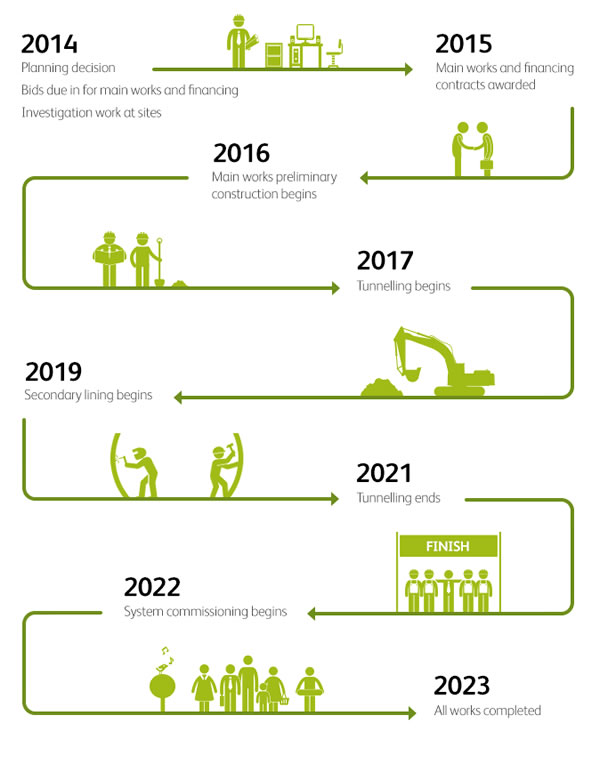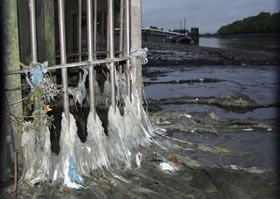Thames Tideway Tunnel Gets Go Ahead
Work on the controversial 15-mile 'super sewer' will start in 2016 and finish in 2023
The Government has given the go ahead to a £4.2 billion tunnel under the Thames that aims to end the need to pump excess sewage into the river.
Thames Water say the scheme is essential to stop sewage overspilling into the Thames during periods of high rainfall and claim last year it could have stopped 97% of such sewage spills. Whereas opponents say the work will cause major disruption near tunneling sites and insist there are better options.
The tunnel will run from the Acton Storm Tanks to the Abbey Mills pumping station, in east London. It will involve the building of a 2.6km tunnel which maps on the consultation document suggest will pass under Abinger Road, Welstead Way, Netheravon Road and Chiswick Mall. When completed the sewer overflow at Chiswick Eyot will be closed improving water quality in the river significantly.

Overflows under Putney Bridge
Thames Water plan to use parts of their existing pumping station and storm water tanks site (adjacent to Canham Road, W3 off Warple Way) for construction work. They also want to build a ventilation chimney on the site. This five storey structure is likely to be visible from neighbouring streets.
Announcing the Government’s decision, Mr Pickles said:“This is a challenging infrastructure project, but it is clear that the Thames Tunnel will help modernise London’s ageing Victorian sewerage system, and make the River Thames cleaner and safer.”
Thames Water reported that last year, 55m tonnes of sewage polluted the tidal River Thames, far higher than the average 39m tonnes that discharges in a typical year. They say this was due to the exceptionally wet weather, which caused the combined sewerage system that London has, collecting rain water and sewerage water from drains, to fill up and pour into the river even more than normal.
TW website warns:
'With the weather of 2014 already proving to be wetter than a typical year, the amount of sewage which is going into the river is likely to once again be above average.'
Thames Water Chief Executive,
Andy Mitchell said:“Hardly a week goes by when untreated sewage isn't pouring in to London’s river and we are pleased that we can now start to tackle this archaic problem.
He continued:“This is a huge project but it’s a huge problem, and we can now get on with tackling it. It’s no easy task, but we’re confident that we can deliver this project and still achieve our aim of minimising the impact on our customer bills.”

Sian Baxter, Chairman, of Stop the Shaft campaign group told us: "We are very pleased about today's announcement for two reasons: Firstly, that the Thames Tunnel will now go ahead, removing the need to dump millions of tons of sewage into the river each year and ... secondly, that the West London drive shaft site for the Tunnel will not be located in Barn Elms, but in Carnwarth Road, a brownfield site in Fulham. The Stop the Shaft group campaigned vigorously for two years against the use of Barn Elms sports fields as a main drive shaft site and argued that brownfield sites should be used for such construction projects."
 Deputy council leader Jonathan Cook said: “Allowing raw sewerage to spill out into the Thames is completely unacceptable and we are pleased this ambitious project can now get underway. It comes as a huge relief that the approved scheme has spared Barn Elms Playing Fields from being used as one of the main tunnelling sites and I want to congratulate the local people who campaigned tirelessly to secure this outcome.
Deputy council leader Jonathan Cook said: “Allowing raw sewerage to spill out into the Thames is completely unacceptable and we are pleased this ambitious project can now get underway. It comes as a huge relief that the approved scheme has spared Barn Elms Playing Fields from being used as one of the main tunnelling sites and I want to congratulate the local people who campaigned tirelessly to secure this outcome.
He continued:
“There will be six construction sites in Wandsworth, more than any other borough, and we will work with Thames Water to ensure the impacts on neighbouring communities and our road network are carefully managed and controlled.
Wandsworth Council has called on the Government to impose a cap on potential bill rises and is calling on the water company to do everything it can to reduce the impacts on household budgets.
September 16, 2014
